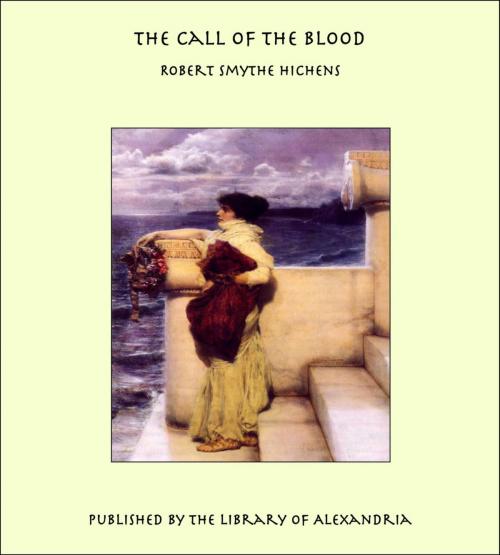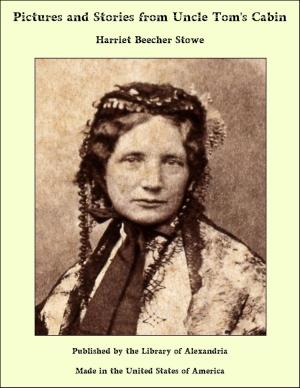| Author: | Robert Smythe Hichens | ISBN: | 9781465551245 |
| Publisher: | Library of Alexandria | Publication: | March 8, 2015 |
| Imprint: | Language: | English |
| Author: | Robert Smythe Hichens |
| ISBN: | 9781465551245 |
| Publisher: | Library of Alexandria |
| Publication: | March 8, 2015 |
| Imprint: | |
| Language: | English |
On a dreary afternoon of November, when London was closely wrapped in a yellow fog, Hermione Lester was sitting by the fire in her house in Eaton Place reading a bundle of letters, which she had just taken out of her writing-table drawer. She was expecting a visit from the writer of the letters, Emile Artois, who had wired to her on the previous day that he was coming over from Paris by the night train and boat. Miss Lester was a woman of thirty-four, five feet ten in height, flat, thin, but strongly built, with a large waist and limbs which, though vigorous, were rather unwieldy. Her face was plain: rather square and harsh in outline, with blunt, almost coarse features, but a good complexion, clear and healthy, and large, interesting, and slightly prominent brown eyes, full of kindness, sympathy, and brightness, full, too, of eager intelligence and of energy, eyes of a woman who was intensely alive both in body and in mind. The look of swiftness, a look most attractive in either human being or in animal, was absent from her body but was present in her eyes, which showed forth the spirit in her with a glorious frankness and a keen intensity. Nevertheless, despite these eyes and her thickly growing, warm-colored, and wavy brown hair, she was a plain, almost an ugly woman, whose attractive force issued from within, inviting inquiry and advance, as the flame of a fire does, playing on the blurred glass of a window with many flaws in it. Hermione was, in fact, found very attractive by a great many people of varying temperaments and abilities, who were captured by her spirit and by her intellect, the soul of the woman and the brains, and who, while seeing clearly and acknowledging frankly the plainness of her face and the almost masculine ruggedness of her form, said, with a good deal of truth, that "somehow they didn't seem to matter in Hermione." Whether Hermione herself was of this opinion not many knew. Her general popularity, perhaps, made the world incurious about the subject. The room in which Hermione was reading the letters of Artois was small and crammed with books. There were books in cases uncovered by glass from floor to ceiling, some in beautiful bindings, but many in tattered paper covers, books that looked as if they had been very much read. On several tables, among photographs and vases of flowers, were more books and many magazines, both English and foreign. A large writing-table was littered with notes and letters. An upright grand-piano stood open, with a quantity of music upon it. On the thick Persian carpet before the fire was stretched a very large St. Bernard dog, with his muzzle resting on his paws and his eyes blinking drowsily in serene contentment. As Hermione read the letters one by one her face showed a panorama of expressions, almost laughably indicative of her swiftly passing thoughts. Sometimes she smiled. Once or twice she laughed aloud, startling the dog, who lifted his massive head and gazed at her with profound inquiry. Then she shook her head, looked grave, even sad, or earnest and full of sympathy, which seemed longing to express itself in a torrent of comforting words. Presently she put the letters together, tied them up carelessly with a piece of twine, and put them back into the drawer from which she had taken them. Just as she had finished doing this the door of the room, which was ajar, was pushed softly open, and a dark-eyed, Eastern-looking boy dressed in livery appeared
On a dreary afternoon of November, when London was closely wrapped in a yellow fog, Hermione Lester was sitting by the fire in her house in Eaton Place reading a bundle of letters, which she had just taken out of her writing-table drawer. She was expecting a visit from the writer of the letters, Emile Artois, who had wired to her on the previous day that he was coming over from Paris by the night train and boat. Miss Lester was a woman of thirty-four, five feet ten in height, flat, thin, but strongly built, with a large waist and limbs which, though vigorous, were rather unwieldy. Her face was plain: rather square and harsh in outline, with blunt, almost coarse features, but a good complexion, clear and healthy, and large, interesting, and slightly prominent brown eyes, full of kindness, sympathy, and brightness, full, too, of eager intelligence and of energy, eyes of a woman who was intensely alive both in body and in mind. The look of swiftness, a look most attractive in either human being or in animal, was absent from her body but was present in her eyes, which showed forth the spirit in her with a glorious frankness and a keen intensity. Nevertheless, despite these eyes and her thickly growing, warm-colored, and wavy brown hair, she was a plain, almost an ugly woman, whose attractive force issued from within, inviting inquiry and advance, as the flame of a fire does, playing on the blurred glass of a window with many flaws in it. Hermione was, in fact, found very attractive by a great many people of varying temperaments and abilities, who were captured by her spirit and by her intellect, the soul of the woman and the brains, and who, while seeing clearly and acknowledging frankly the plainness of her face and the almost masculine ruggedness of her form, said, with a good deal of truth, that "somehow they didn't seem to matter in Hermione." Whether Hermione herself was of this opinion not many knew. Her general popularity, perhaps, made the world incurious about the subject. The room in which Hermione was reading the letters of Artois was small and crammed with books. There were books in cases uncovered by glass from floor to ceiling, some in beautiful bindings, but many in tattered paper covers, books that looked as if they had been very much read. On several tables, among photographs and vases of flowers, were more books and many magazines, both English and foreign. A large writing-table was littered with notes and letters. An upright grand-piano stood open, with a quantity of music upon it. On the thick Persian carpet before the fire was stretched a very large St. Bernard dog, with his muzzle resting on his paws and his eyes blinking drowsily in serene contentment. As Hermione read the letters one by one her face showed a panorama of expressions, almost laughably indicative of her swiftly passing thoughts. Sometimes she smiled. Once or twice she laughed aloud, startling the dog, who lifted his massive head and gazed at her with profound inquiry. Then she shook her head, looked grave, even sad, or earnest and full of sympathy, which seemed longing to express itself in a torrent of comforting words. Presently she put the letters together, tied them up carelessly with a piece of twine, and put them back into the drawer from which she had taken them. Just as she had finished doing this the door of the room, which was ajar, was pushed softly open, and a dark-eyed, Eastern-looking boy dressed in livery appeared















